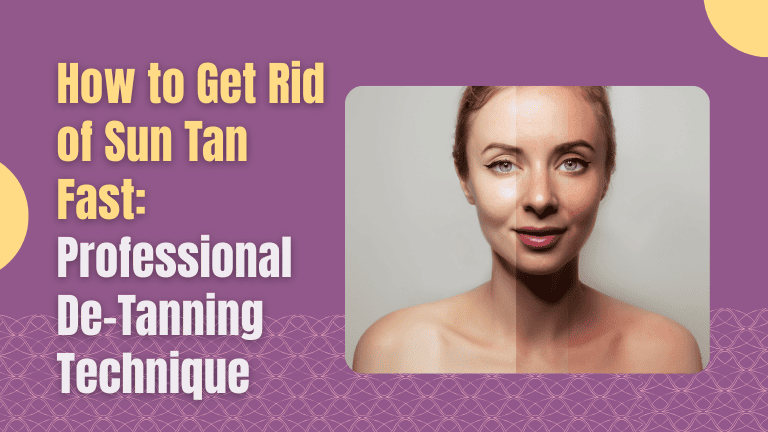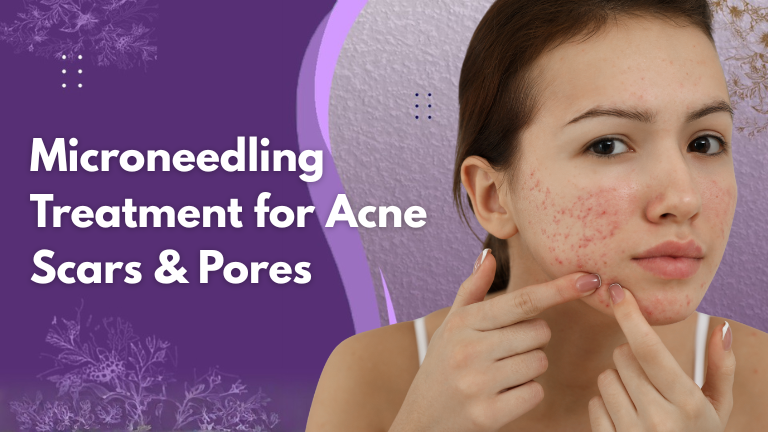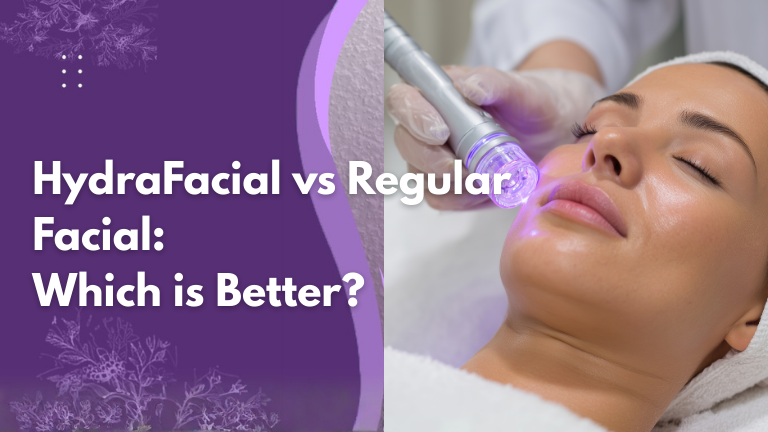Though India’s sunny, warm days are beautiful, the harsh, blazing sun rays tend to bestow an undesirable gift — a persistent sun tan. From beach holidays, wedding ceremonies, to even daily mundane exposure, tanning tends to give your skin an uneven appearance, darker than it looks, and dull. Although home treatments and over-the-counter medications do their job, they are time-consuming and don’t provide the instant, tangible result that most of us yearn for.
That’s where professional de-tan treatments come in. Professional de-tan treatments by dermatologists and skin clinics remove sun tan safely and effectively — even leaving your skin brighter and clearer in a few visits. In this article, we discuss the fastest and most sought-after professional way of getting rid of that unwelcome tan, what they do, and help you decide on the best one for your lifestyle and skin type.
How to get rid of sun tan instantly?
The fastest way is through daily massaging of skin with gentle scrubs or homemade scrubs like lemon juice and tomato pulp. Massage of aloe vera gel on skin calms and moisturizes skin, and gives a fairing effect to tan. Chemical peeling or laser is fast but professional work.
Professional treatments and normal skin care will readily cause sun tanning. Professional treatments like chemical peels, microdermabrasion, and laser resurfacing are a few of the quickest methods to bleach tan, which remove the facial layer of dead pigmented epidermal skin cells. All of these treatments trigger the process of regeneration of the skin and cause fairer and newer skin underneath.
Even with professional treatments, care during the day is needed. The depigmentation creams containing vitamin C, niacinamide, and alpha arbutin are used so that they promote lightening of tan in the long term. Apart from this, daily sun screening needs to be performed so as not to darken any further and aid the skin healing proportionally.
Home treatments are very common and time-consuming, and would not work on stubborn tan. The fastest safe treatment is professional de-tan treatments, combined with sun protection and good skin care.
How to remove tan quickly?
You can also speed up fading by exfoliating from time to time to remove dead cells, and through face masks with lightning natural ingredients like turmeric and yogurt. Stay away from the sun and apply moisturizer. Vitamin C serums also speed up skin healing.
In order to fade your tan rapidly, one must find a balance between professional treatments and good skincare. Begin with gentle exfoliation products such as a scrub or chemical exfoliants containing glycolic acid or lactic acid — these remove dead, pigmented skin cells and provide a lighter skin tone. Using brightening serums or creams containing vitamin C, niacinamide, or alpha arbutin can also accelerate fading by inhibiting melanin production.
Professional treatments such as chemical peels, microdermabrasion, and laser may possibly work more quickly by accelerating the regrowth of the skin and penetrating deeper into tanned skin. In addition to these, daily application of a broad-spectrum sunscreen to prevent re-tanning and cover healing skin.
Remember that lightening is accelerated through these treatments, but TLC and patience will be needed in order to achieve an even, radiant tone.
When does the tan fade?
Use mild cleansers and natural bleach like lemon or tomato juice for colour bleach. Use moisturising creams like aloe vera later to keep your skin well moisturized. Never expose your skin to the sun later.
For immediate tanning removal, professional treatments combined with a regular skincare routine would be most appropriate. Professional treatments such as chemical peels, microdermabrasion, and laser treatment will exfoliate and regenerate skin at a faster rate than home remedies, and tan can be removed quickly through them.
With these treatments, employ light exfoliants and whitening creams containing vitamin C, niacinamide, or glycolic acid to induce turnover of the skin. Most importantly, never ever neglect to protect your skin from further sun damage with a broad-spectrum sunscreen daily.
Although some of the home remedies are effective, they are time-consuming. Professional de-tanning treatments, daily sun protection, and skincare are your best bet for instant and fast tan removal.
How long do tans last?
Natural tan will only last 1-3 weeks because your skin renews itself. It may be sooner or later, depending on what your skin is like, how much sun you get, and the type of care you have for your skin. Sun care and exfoliating with your skin cause it to fade quickly.
Its lifespan, while long, is based on a broad spectrum of underlying influential factors like the condition of your skin, the level of exposure, and how you care for your skin afterward. Its average lifespan is seven to twenty-eight days, since your skin is biologically programmed to recover in the 28 to 40-day period. And from that point on, the dead skin will flake more and more and be replaced increasingly by fresher, uneven brown skin.
And depending on how many more hours you spend outside and with no sunshade, the tan is going to be darker or more persistent because your skin is defending itself with more melanin. And in turn, how outside factors such as pollution, sweating, and humidity influence this process shall be examined subsequently.
Treatment skin care will improve fading. Lightly exfoliate to strip away dead, pigmented skin cells more quickly, and moisturize to nourish normal skin and stimulate skin renewal. Shield skin against harmful UV, which breaks down the pigmentation and prolongs tan life, with sunscreen.
For lasting or permanent tans, fading will accelerate with professional methods such as laser or chemical peels. A tan should linger, but for how long will vary depending on the amount of sun you get and how well you take care of your skin afterwards.
What cleanser can I use so that the tan will be washed away?
Kojic acid, glycolic acid, or vitamin C facewashes are applied to peel tan off because they bleach and peel off the superficial layer of the skin. Apply a mild one as per your skin type so that it won’t damage your skin. These face washes peel tan off every day.
Selecting the correct cleanser plays a key role in the fading of sun tan. The correct cleansers exfoliate dead, pigmented skin cells without drying out the skin by mildly scrubbing the skin. Glycolic acid and lactic acid (both AHAs) are great ingredients because they provoke skin rejuvenation by peeling off the surface of dull, sun-tanned skin to make way for new skin to emerge underneath.
For oily skin and acne, penetration of salicylic acid (BHA) cleanser deep into pores removes dirt from pores and firms up sun-damaged pigmentations. Complexing lightening cleansers with vitamin C, niacinamide, turmeric, or licorice extract inhibit the formation of melanin to achieve a uniform complexion by removing tan spots from the skin.
Take care to apply a formula appropriate for your skin type. For sensitive or dry skin, apply gentle cleansers with mild exfoliants and avoid harsh scrubs or foaming cleansers that will dry out your skin and provide more irritation. Over-exfoliation will kill your skin barrier and will discourage the fading process.
Along with this, wash your face twice daily to keep your skin healthy and to help the tan fade. Use a cleanser on your face and then put a good moisturizer on it to make your skin healthy. Put a broad-spectrum sunscreen on it to prevent additional UV damage to your skin.
And finally, in brief, the best product to use to remove the tan is the one that will exfoliate without flaring up, bleach your skin, be perfect for your skin type, and at the same time provide your skin’s natural healing process with some room.
Why won’t tan fade?
If your tan does not easily wash out, it is likely due to repeated sun exposure or not exfoliating and maintaining the skin well. Evening out pigmentation would also usually last longer in an effort to wear off naturally by itself. Sunscreen and products containing lightening agents, to be applied when tanning, are needed to eliminate the tan.
Too little exfoliation is also an effective option. Dead cells clog the surface, trapping pigment inside and making it all the harder to be metabolized by the tan. Regular light exfoliation breaks down dead cells and speeds normal skin renewal. Exfoliating too infrequently or too aggressively will irritate your skin, do nothing helpful, and exacerbate the pigmentation.
Your healing process and your skin type also come into play. People with darker or melanin skin, like the majority of Indians, are likely to retain pigmentation because of the natural response of the skin to sun damage. Second, deep or long-duration sun exposure tanning is more difficult to heal compared to light tanning.
With the inappropriate application of the wrong skin care products or without moisturizing, fading is slowed. Astringent soap, scrubs, or disproportionate programs dry out your skin and induce pigmentation more severely. And even if you’re not moisturizing, your barrier is disrupted, withholding healing.
Lastly, tans are incredibly tenacious and need professional treatments such as chemical peels, microdermabrasion, or laser therapy to act more quickly. In order to remove tan, do not be in contact with the sun daily, use a light exfoliating technique, use lightening creams such as vitamin C or niacinamide, use moisturizers on your skin, and consult a dermatologist if the tan fails to disappear.
How to make tan disappear sooner?
Remove tans instantly by exfoliating, applying brightening creams like vitamin C, avoiding the sun, and keeping the body hydrated. Drink lots of water and use good skincare to give life to the skin instantly.
Combine good treatments with good skincare to whiten a tan in a single night. Start by lightly exfoliating your skin randomly with chemical exfoliants such as glycolic acid or lactic acid — they clear away dead, pigmented skin cells. Apply brightening products, such as vitamin C, niacinamide, or alpha arbutin, which break down melanin and even out the tone of your skin.
Shield your skin against sun damage by applying a broad-spectrum sunscreen every day, even indoors. Hydrated and moisturized skin also leads to faster renewal of the skin. For faster and noticeable results, go for professional de-tan treatments like chemical peels or microdermabrasion.
Patience and persistence are the mantras — take good care of your tan, and it will fade faster while your skin will glow again.
What are the tan removal chemical?
Glycolic acid, lactic acid, and kojic acid tan by exfoliating dead cells and by inhibiting the formation of melanin. These chemicals are applied in all depigmentation and skin bleach products applied to healthy wear daily.
Some chemicals are best applied in spa treatments and salon procedures for tan removal through bleaching pigmentation and triggering skin renewal. Some of them most deserving to own include:
- Glycolic acid: Mildly irritating AHA, which removes dead skin and initiates new skin growth, lessening tan pigmentation.
- Lactic acid: Another AHA, which lightens the complexion color and relaxes the texture of skin without drying or irritating it.
- Vitamin C: Antioxidant of choice, which derails the melanin formation process and even smooths the skin.
- Niacinamide: Whitens the melanin lesions and enhances the functioning of the skin barrier.
- Kojic acid: A Melanin synthesis inhibitor that is extremely commonly found in fairness creams.
- Alpha arbutin: Potent yet mild melanin inhibitor that retards pigmentation.
- Azelaic acid: Prevents pigmentation and reduces inflammation.
Chemical peeling, conducted with glycolic acid or lactic acid, in occupational de-tanning therapy kills the pigmented epidermal layers immediately without harming them.
Sun tan is a chronic and persistent skin problem, especially in India’s wild and harsh sun. While some tan cannot be helped and will fade within no time, continuous prolonged exposure without protection will result in patchy colouring of the skin, pigmentation, and dullness. The trick to removing the tan early and having healthy and glowing skin is to know how to pamper your skin and care for it after sun exposure.
Professional de-tan therapy is just as swift and effective, yet the result will be based on everyday care of the skin with gentle exfoliation, moisturizing, and daily application of sunscreen. Skin type also differs in each individual, so frequency and tolerance will be the key. Do not scrub hard or over-treat, as that will cause irritation or aggravate pigmentation.
And finally, but not at all last, after good skin care by the sun and good products, you lose tan, but also possess healthy, silky, and radiant skin throughout the year. Easily healthy-looking skin throughout the seasons with good care and sun-smart behaviour.
FAQs
1. Is sun tan removable permanently?
Sun tan itself is reversible. It spontaneously breaks down with the regeneration of the skin, typically in 2–4 weeks. Permanent pigmentation can result from over-sun exposure without protection, however. Skincare therapies and regular sunscreen use avert permanent tanning.
2. When is it possible to have a de-tan treatment after tanning?
You can get a de-tan treatment once redness or sunburn subsides—typically 2–3 days. Always talk to a dermatologist before professional treatments if your skin is sensitive or sunburned.
3. Are de-tan treatments appropriate for every skin type?
Yes, but handle your skin type correctly. Sensitive or dry skin could be better suited for milder treatments such as lactic peels or face treatments with aloe, whereas acne or oily skin is more able to withstand more aggressive chemical peels. Patch-test or consult an expert in skincare whenever possible.
4. Can men also get de-tan treatments?
Yes! De-tan treatments are not gender-specific, and men also benefited. They have oilier, thicker skin, and they like some of the treatments like glycolic acid peels or microdermabrasion.
5. Does sunscreen prevent tanning completely?
Sunscreen does minimize tanning, but will not necessarily stop it from happening at all if you stay in the sun for some amount of time. Use a broad-spectrum SPF 30 or greater, use every 2 hours, and cover up with cover-ups for optimum protection.



